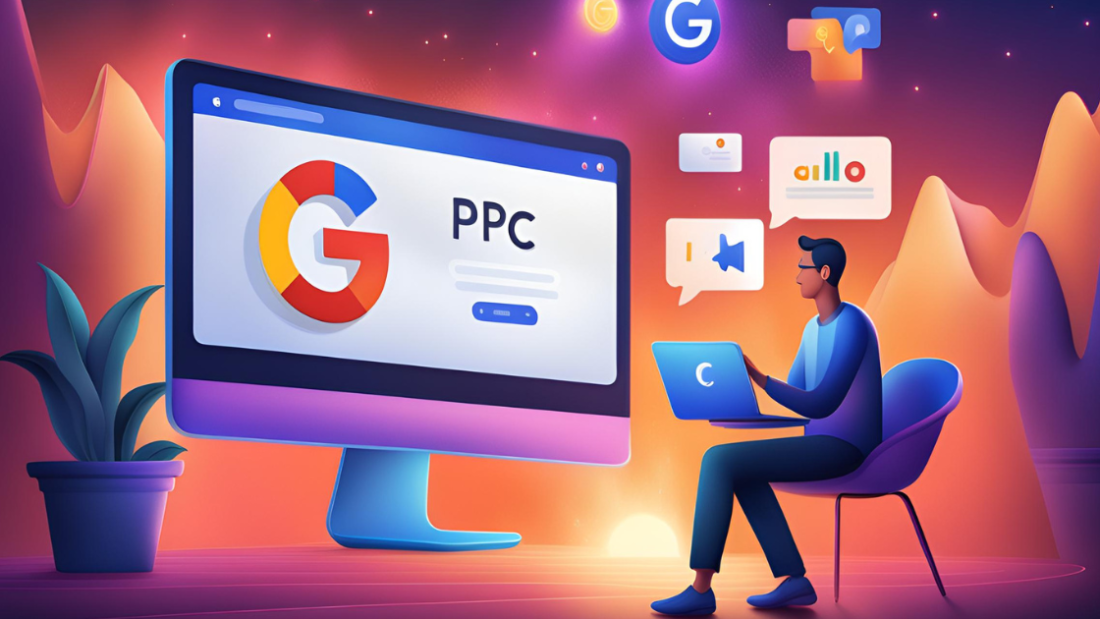Social media has changed how businesses interact and sell to their customers. In this fast-paced, digital world, good social media strategies are essential. Every business wants to succeed, and social media can make that happen. Why? Billions of people use various platforms every day. So, it gives businesses excellent chances for interaction, engaging customers, and making sales.
Social Media Marketing Services can help businesses design campaigns that their audience loves. This increases visibility and boosts sales. This blog will delve into strategies for successful social media marketing. Social Media Marketing Services will also share some best practices to improve involvement and boost sales even more. We’ll start with basics and work up to specific techniques that deliver real results. Whether you’re a small, new business or a well-known brand, how you market on social media can make a huge difference in achieving your marketing aims.
Table of Contents

The Importance of Social Media Marketing Services
Social media marketing matters a lot for businesses wanting a powerful online image. As social media keeps changing, businesses need to stay in the loop to keep their audience hooked. Social Media Marketing Services helps brands talk directly with customers, making them feel part of a community and loyal. By using these platforms, businesses can ramp up brand visibility and guide traffic to their websites to boost sales.
Also, social media marketing provides a peek into customer habits. Studying how users interact and engage, businesses can tweak their marketing plans to match what their audience wants. This custom approach boosts customer happiness and repeated sales. Businesses that tap into Social Media Marketing Services are often viewed as more easy-going and credible, which boosts customer bonds.
Key Benefits of Using Social Media Marketing Services
- Boosting Brand Recognition: Social media’s vast reach aids businesses in connecting with a large number of people. Through regular sharing of useful content, brands can boost both their visibility and recognition.
- Engaging Customers Directly: Social Media Marketing Services presents an opportunity for real-time contact with your customers. Brands can address queries, take in feedback, and initiate dialogues, nurturing a devoted community.
- Affordable Marketing: When comparing to traditional marketing techniques, social media marketing may seem more wallet-friendly with a high return on investment.
- Precision Advertising: Businesses can take advantage of advanced targeting options to engage with particular demographics more likely to engage, ensuring marketing efforts are effectively utilized.
Recognizing these advantages can motivate businesses to take efficient benefit of Social Media Marketing Services. One way is by leveraging targeted ads to engage probable customers based on their interests and activities, improving the chances of engagement. More so, by participating in interactive conversations, brands can solidify their relationship with their audience resulting in enhanced trust and loyalty.
Strategies for Boosting Engagement Through Social Media
Let’s talk about ways to pump up interaction with your brand using Social Media Marketing Services. There are several cool tricks you can use. Get this:
- Make Your Content Shareable: Stuff people find helpful or interesting is likely to be spread around, getting your name out there.
- Try Adding Visuals: Posts with killer visuals like photos, videos, or easy-to-understand infographics usually grab more attention. They stick in memory too.
- Promote Content from Your Users: Rewarding customers who make stuff about your brand can jump-start engagement. It feels genuine too. You could try contests or giveaways.
- Collaborate with Influencers: Working with influencers who vibe with your brand can introduce your goodies to fresh faces and bolster trust.
Using these tools can skyrocket engagement and open up more chances for sales. Like, something shareable could smash the Internet, bringing in fresh faces you might never have reached otherwise. As you chat more effectively with your crowd, you surround your brand with a true sense of togetherness, which can really push sales forward.
Measuring Success in Social Media Marketing
Making your social media marketing effective means you’ve got to track progress correctly. Key performance indicators (KPIs) are important tools for checking how well your social media activities are doing. Here’s a breakdown of some KPIs:
- Engagement Rate: This counts likes, comments, shares, and overall connections with your posts. High engagement means your content is a hit with your followers.
- Reach and Impressions: It’s crucial to know how many folks see your content and how much they do. It’s key to seeing how visible you are.
- Conversion Rate: Keep tabs on how many social media talks end in sales or specific actions on your website.
- Follower Growth Rate: Watching how fast your audience grows can give you clues about your brand’s charm and scope.
By studying these metrics, companies can better understand what’s effective and what needs work in their Social Media Marketing Services and plans. This continuous review keeps marketing efforts in line with business goals.

Crafting an Effective Social Media Strategy
Defining Your Goals
Having rock-solid, quantifiable targets is vital for a flourishing social media plan. Without set aims, it’s tough to gauge progress or see how well you’re doing. Here are some usual targets:
- Broaden Brand Recognition: Try to connect with a wider audience and improve your brand’s presence.
- Develop Leads: Use social media to draw potential clients and guide them to your website or sales pages.
- Lift Engagement: Concentrate on upping likes, shares, feedback, and total interaction with your posts.
- Push Sales: Put in place strategies that guide straight to conversions, be it through online purchases or lead creation.
Setting these targets helps tailor your content and figure out the top platforms and techniques to use.
Identifying Your Target Audience
Knowing who you’re talking to on social media aids in the success of your campaign. If you’re aware of your viewer’s age, hobbies, and actions, you can tailor your posts. Here’s how to determine who’s watching:
- Check the market: Use things like surveys, chats, and group discussions to learn more about your viewers.
- Size up the competition: Look at who follows your rivals and what they like.
- Try out data tools: Facebook Insights and Google Analytics offer helpful insight into your present viewers.
When you know your audience, you can make relevant content to engage them and boost your results.
Choosing the Right Platforms
Think of social media platforms like tools in a toolbox – each one is unique and useful in its own way. When picking your tools, think about these aspects:
- Who’s Listening: Find out where your ideal customers hang out. Young folks might be on TikTok or Instagram, while career folks might use LinkedIn more.
- What Works Best: Each platform likes different things. Instagram and Pinterest love pictures, but Twitter digs brief messages.
- Why You’re There: Ensure your social media choice matches your goals. Want to spread the word about your brand? Try a platform with a bunch of users, like Facebook.
Picking the right platforms can help keep your marketing work target-oriented and efficient.
Crafting Engaging Content
The Importance of Content Quality
Making top-notch content is key to grabbing your followers’ interest and boosting involvement. Consider these crucial points:
- Relevance: Your stuff must cater to your followers’ curiosities and necessities.
- Value: Supply them with insightful, amusing, or motivating material to enrich their lives.
- Consistency: Stick to a regular upload timeline to keep your followers hooked and making them return for more.
Content Calendar and Planning
Ever thought of a social media plan? You’re going to need a content calendar. It makes your strategy flow gracefully and ensures it’s dependable. Let’s create one together:
- The first step is to choose Content Themes: Discover what resonates with your audience and embodies your brand’s essence.
- Second, Schedule Posts: Determine the ideal time and location for every piece of content. Consider your audience’s peak engagement times.
- Lastly, Monitor and Adjust: Keep track of your posts’ performance. Don’t hesitate to alter your strategy if needed.
User-Generated Content
Want to boost interaction and trust with your followers? Using User-Generated Content (UGC) is a great start. Let’s talk about exciting UGC ideas.
- Think contests or giveaways: Treat your followers with cool prizes for creating content featuring your brand.
- Share the spotlight: Reveal customer experiences that show your product or service’s impact.
- Invent unique Hashtags: This makes it simple to spot and share customer posts about your brand.
Adding UGC to your marketing plan can help create a real, relatable community for your brand.

Boosting Engagement Through Interactive Content
Types of Interactive Content
Interactive material can boost involvement and craft notable moments for your viewers. Think about these styles:
- Polls/Surveys: Gather views and responses from your crowd while fueling participation.
- Quizzes: Make lively and captivating quizzes that connect to your label or business sector.
- Contests: Arrange competitions that push members to interact with your product for an opportunity to bag awards.
Best Practices for Engagement
Try these cool tricks to get more action on your social posts:
- Be Curious: Spark chats by popping open-ended queries.
- React Fast: Answer all comments or messages fast, showing your audience they matter.
- Have clear Steps: Provide clear steps in your posts, guiding your audience on their next move.
This could be checking your site, sharing your message, or chatting more. When you do these things, your social media will become more lively and fun.
Leveraging Paid Advertising on Social Media
Understanding Paid Social Media Advertising
To expand your business, try paid social media adverts. They reach many people, targeted ones too. Here’s a simple guide:
- First off, know your ad formats. On diverse platforms, you see image ads, video ads, carousel ads, even stories.
- Then comes targeting options. Use them to find the audience you need. They’re based on things like age, likes, actions, etc.
- Lastly, budgeting matters. You can decide either a daily or total spend limit to stay within your budget!
Creating Effective Ad Campaigns
Planning a winning ad strategy? Let’s hit these steps.
- Set Your Goal: What’s your campaign’s main aim? You might want to boost brand visibility, create leads or drive sales.
- Write Captivating Ad Text: Draft ad text that clicks with your audience. It should highlight the perks of your products or services clearly.
- Make Striking Images: Go for top-notch pictures or videos that grab eyeballs and evoke clicks.
Measuring Ad Performance
Get to know your ad campaign’s triumphs. Check these figures:
- Click-Through Rate (CTR), or how often your ads get clicked vs viewed.
- Cost Per Click (CPC), it lets you know what each click is costing you.
- Return on Ad Spend (ROAS), your earnings for every ad dollar used.
Keeping track of these key stats aids in sharpening your campaigns, boosting both efficiency and gains.
Building Community and Loyalty
The Importance of Community
A solid brand community can boost how loyal your customers are. Let’s get into how to build this community:
- Stay Active: Keep posts rolling and chat with your followers to create a homey feeling.
- Run Events: Plan digital events, webinars, or live question and answer sessions to bond with your audience more personally.
- Spotlight Customer Stories: Share your customers’ journeys to thank them and make them feel a part of your community.
Retaining Customers Through Social Media
Keeping customers is as crucial as gaining new ones in boosting sales. Here’s how to nourish your customer relationships:
- Customize Messages: Use information about clients to tailor messages and interactions. It helps customers feel important.
- Supply Unique Material: Give exclusive content or deals to your devoted followers. It sparks repeated engagement.
- Ask for Opinions: Frequently request feedback. It shows customers their thoughts count and allows you to refine your Social Media Marketing Services.
By concentrating on building community and retaining customers, a faithful client base can be formed. This faithful base will perpetually fuel your sales.

Future Trends in Social Media Marketing Services
Emerging Technologies and Trends
It’s important to keep up with new trends to stay competitive. Check out these trends to watch out for:
- AI: AI is popular for chatbots, making content, and examining data, which improves customer conversations and knowledge.
- AR: Companies are using AR to deliver awesome experiences. This lets customers see products in real-world scenes.
- Brief Video Content: Places like TikTok and Instagram Reels encourage short, interesting video content. So, brands have to change their plans to match this trend.
Preparing for the Future
Stay on top in the fast-paced world of social media by embracing these tactics:
- Learn Always: Equip your crew with the newest information about social media swings and instruments.
- Stay Light on Your Feet: Keep ready to switch gears to meet fluid algorithms and shifts in audience likes.
- Watch the Competition: Keep tabs on what your rivals are doing to spot chances and potential hazards.
By staying clued-up and flexible, your brand is well set to thrive in the next chapter of social media promotion.
Conclusion
Brands today in the fast-paced digital marketing world need to use Social Media Marketing Services to boost engagement and sales. With more customers going online, a robust social media plan is a must for businesses to connect deeply with people. Producing top-notch, shareable content is key. Engage with your followers live. Run targeted ads. This won’t just increase how visible you are, it’ll help make customers loyal. This guide offers a clear path for brands big and small. It will help you tackle social media’s ins and outs, making sure you stay on top and in the game.
But remember, success in Social Media Marketing Services comes from adapting fast and staying responsive to trends and what your audience likes. Any business that keeps a close watch on analytics and checks how they’re doing can perfect their plan over time. This leads to better outcomes and a bigger return on your investment. As you go about all this, always stay real and engage in a genuine way. Trust and community are vital in building your brand. With constant changes in the digital world, making full use of Social Media Marketing Services can lead to more sales and stronger relationships with your customers, paving the way for long-term success.
Also Read- Social Media Marketing Services to Empower Your Growth
FAQs: Social Media Marketing Services
What are Social Media Marketing Services?
Social Media Marketing Services cover a wide range of methods and implements designed to boost businesses on social media sites. This includes making content, managing social media, setting up focused adverts, and measuring the results.
How can social media marketing increase sales?
Engaging well with viewers, steering people towards websites, and taking advantage of focused advertising, are ways social media marketing can change possible clients into actual paying ones. This process also boosts sales.
What platforms should I focus on for social media marketing?
Different folks prefer different social platforms. Some like Facebook, Instagram or Twitter. Others may favor LinkedIn or TikTok. Knowing where your crowd hangs out is key. It makes your marketing strike the right notes.
How do I measure the success of my social media marketing?
There are different KPIs like engagement, reach, conversion, and follower growth that let you gauge success. Scanning these gives clarity on how to perfect your tactics.
Can small businesses benefit from Social Media Marketing Services?
Indeed! Little companies can take advantage of Social Media Marketing Services help. This can boost their recognition, interact with clients, and spark sales. Usually, all this can be done with less spending than old-style advertising ways.













